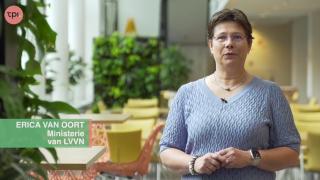In vitro predictive models of particle-induced granulomas
Léa Hiéronimus is a PhD student at the Louvain centre for Toxicology and Applied Pharmacology (LTAP, UCLouvain, Belgium). Léa is working in François Huaux's team, where we are trying to better understand how certain inhaled particles exert their toxicity. The goal is to better diagnose and treat individuals exposed to particles, but also to identify the particle characteristics which induce, or do not induce, toxic effects. For this, Léa studies a very particular cell type which seems to be involved in particle responses. Indeed, we have found the specific accumulation of the innate subset of B-lymphocytes called “B-1 lymphocytes”, which occurred during granuloma formation/maturation induced by inhaled particles in mice. According to the literature, this accumulation can be attributed to their migration from mesothelial cavities such as the peritoneum, acting as a reservoir.
In addition to conventional particles-induced granulomas, which formation rely on macrophages responses, we developed new models relying on B-1 lymphocytes. Indeed, B-1 lymphocytes show a unique clustering property, that is not observed using macrophages or other subsets of B-lymphocytes (conventional B-2 lymphocytes) as purified B-1 lymphocytes regroup granuloma-inducing particles (carbon nanotubes CNT7, crocidolite asbestos, micrometric silica MinUSil and MSS, cobalt oxide,…) but not carbon black, a particle not-inducing granuloma in vivo. Additionally, we developed a model aiming to recapitulate the lung after B-1 lymphocytes migration and found that macrophages and epithelial cells (MHS and LA4 cell lines) where grouped to form spheroids when in coculture with B-1 and not B-2 lymphocytes.
These models will serve as tools to identify new mediators of granuloma formation, which could serve as biomarkers and/or therapeutic targets for exposed individuals. On the other hand, we aim to propose new bioassays for the prediction of granuloma-inducing materials using alternative models.
Lab website: https://uclouvain.be/en/research-institutes/irec/ltap
Contact: lea.hieronimus@uclouvain.be
New

Helpathon #12 – Can you help Erica?

The NAM Navigator: A unique repository for information on the validation and acceptance of New Approach Methodologies
